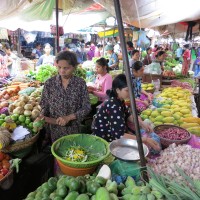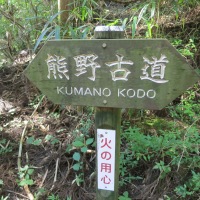Comprised of surreal, otherworldly landscapes, towering mountains, volcanic craters, and palm-tree fringed beaches, the Island of Jeju – or Jeju-do – lies 85 kilometers of the southern tip of the Korean Peninsula and has become the holiday or honeymoon destination of choice for many Koreans. Given its popularity and the prospect of sunny beaches, I chose to make it the final stop on my Korean itinerary. Before I could enjoy the fresh seafood or dramatic vistas of Jeju-do, however, I first had to get there, which meant a quick trip through the southern port town – and South Korea’s second largest city – of Busan.
Busan, South Korea:
As with many of the “second cities,” Busan takes on a more rough-and-tumble character: a blue-collar, work-hard-play-hard type of city where the locals are both blunt in their speech and comedic in their attitude towards life – a contrast to the refined attitude of the first city (Seoul, in this case). My time in Busan was brief, however, so I was only able to scratch the surface of the city’s identity. The downtown itself is carved into small pieces by a variety of mountains and steep hillsides that indiscriminately slice and dice their way through the city, but given that I was looking to lay low, I chose to hunker down near the city’s most famous beach, Haeundae:

Unfortunately I was visiting in October, meaning the temps were a bit too low for beach-bumming (thus, the absolute lack of people on the beach)

My visit also coincided with the annual Busan International Film Festival. I didn’t have time to sit through many films, but I did, however, take advantage of the free concerts on the beach
When faced with the question of how to spend the 1 full day that I had in Busan, I nailed the list of potential options down to two: either a strenuous hike around the ruins of the Geumjeong Fortress on a nearby mountain side or a leisurely day of sleeping in, ambling up and down the beach, and popping in an out of coffee shops and cafes when the mood strikes. Given that I had been traveling for over 14 months, the early symptoms of travel burnout were starting to rear their ugly heads again, and my entire body ached from the hundreds of hours spent on buses that are too small, trains that smell funny, and mattresses that are more cardboard than comforting, and it’s understandable that I was favoring the latter option. Regardless of my inclinations, however, the decision was soon to be made for me.
After waging an unspoken war with my five other roommates as to whether or not the air-conditioning in our cramped, stuffy, windowless, and unventilated dorm room should be turned on or off (I was maneuvering for the cooling relief of moving air), I made the tactical error of going to bed first – meaning that as soon as they felt reasonably confident that I had drifted off to sleepy-town, the air-conditioning was swiftly and unceremoniously flicked off. Subsequently, I awoke in the evil, “so early they can hardly be said to exist” hours of the morning the next day, drenched in sweat, the room muggy with humid air, and with the overwhelming desire to get out as fast as I could. Thus, my day was planned: hiking it was.
After dragging my weary, sleepless-self up the mountain, I spent the next hour making several false starts as far as which path to take (some paths were only marked in Korean, most weren’t marked at all). My plan was to hike a northward-bound path starting from the South Gate of the fortress, and once I found the correct trail – marked by a stream of very fashionable hikers – I began making my way towards the other end of the fortress, the North Gate. Cue to an hour later: I’m even more tired and frustrated now, as the promises of a “beautiful hike” that had lured me into this whole thing to begin with were beginning to appear overstated; the journey being more and more like an average walk through a forest and less and less like a destination worthy of wasting a precious day of travel.
Alas, my consternation turned out to be ill-founded. As I continued to press on, the surrounding trees began to fall away, exposing my path along the ridge of the mountain side, with jaw-dropping views of the city below on both sides. I had found what I was looking for, and this turned out to be one of my favorite moments of my time spent in Korea. Further, I realized that I was again immersed in one of the great traveling moments when you can’t help but smile a cheesy grin out how beautiful life can be sometimes. Although the pictures don’t do the hike justice, here are a few shots from latter half of the hike:
Jeju-do, South Korea:
Once my legs recovered from logging over 20 kilometers of hiking the mountains, it was off to the Jeju-do, technically still a part of South Korea but with a “self-governing” tag slapped on. Stretching only 45 miles across and 25 miles north to south, this semi-tropical island of basalt and lava was originally created by a series of volcanic eruptions several million years ago, the remains of which can still be seen in many of the island’s most popular attractions, such as the lava tubes, dramatic shorelines, and volcanic craters. Being the most popular holiday destination for many Koreans, it also has its fair share of man-made sights (which range from mildly pleasant to extremely tacky), as well, but these hardly contend with the raw powers of nature.

The alien atmosphere inside the Manjanggul Cave, created by the flow of lava during one of the island’s volcanicly active periods

A stroll through the aquatic garden of Hallim Park, very-clearly an artificial attraction, but still lovely nonetheless

Cuttlefish (or squid) being dried near the shoreline, a common sight. After drying, the squid is enjoyed as a chewy compliment to a glass of beer of soju
At the far Eastern edge of the island lies Jeju’s most popular and photographed attraction: the extinct volcano known as Ilchulbong. Given its location on the island, it has long been known to offer the most dramatic views of the rising sun first thing in the morning, a pilgrimage that many undertake, which has also lent the volcano’s nickname, “Sunrise Peak.” I didn’t quite wake up early enough to climb up and catch the morning’s first light, but the view from atop the rim is still worth the energy expenditure in hiking up the face:
Another unique characteristic of Jeju-do is the presence of the Haenyeo – a group of several thousand hard-working female divers – most of whom are well into their sixties and even seventies – that free dive (all year round, in all-weather conditions, mind you) without oxygen tanks to depths up to nearly 60 feet in the pursuit of the delicacies of the sea. The practice is slowly dying out, as less and less young women have a desire to take up the trade, but in the meantime, the remaining Haenyeo aren’t letting old age stop them from spending their time in the sea

The Mother-of-Pearl shell of Abalone, a bitter-tasting, mollusk like shellfish that is one of the most prized catches for the Haenyeo. Here on the island, the often use the abalone is a dish called Jeonbok Juk, or abalone rice porridge)
With food on the mind, Jeju also is home to a handful of specialties. Being an island, seafood is naturally the most plentiful protein source available, so it is no surprise that fish graces the majority of restaurant meals. The island’s twist, however, is that they often enjoy their fish in its raw state, cut into shashimi pieces and laid out in artistic presntations, known here as Hoe. If eating raw fish doesn’t float your boat, however, the other island specialty is Heukdwaeji, or pork from a local, black-skinned pig. As is usual in Korea, this is served up on a table side-grill and meant for sharing:

Heukdwaeji (Black Pig) grilling away. And if you’re first thought upon seeing this picture is, “Wow, that a big portion for one person,” then you’ve obviously forgotten that this is Korea, and they serve everything with a staggering variety of Banchan, as well:

It wouldn’t be a holiday destination if it didn’t have its own rice liquor, too! In this case, this is called Omegisul and had a sweet, syrupy taste with a floral aroma
Jeju-do marks the end of my trip through Korea – and the conclusion to my kimchi binge – as I begin my Great China Adventure next, with my starting city being the capital of Beijing. Until then, cheers from Jeju-do!

 October 15, 2012
October 15, 2012 







































Enjoying your photos and writing very much! Did you eat the dried squid?!! yech lol
I’ve tried the dried squid in past destinations, but have yet to enjoy it, so I chose to give it a miss this time around. Ha ha.